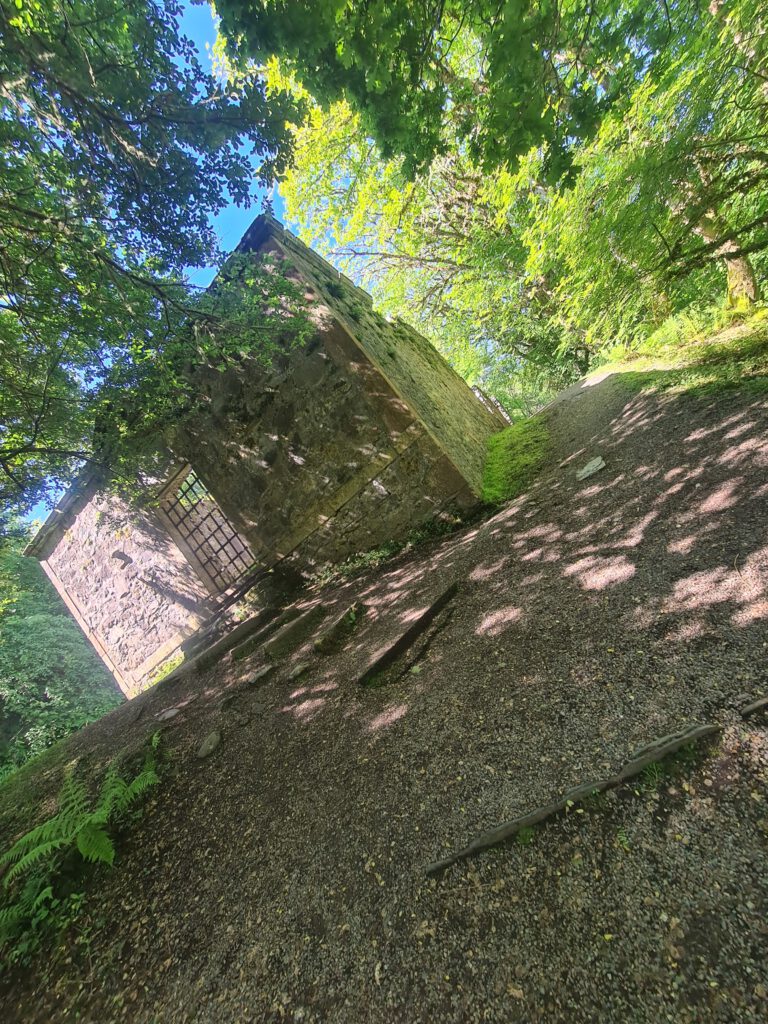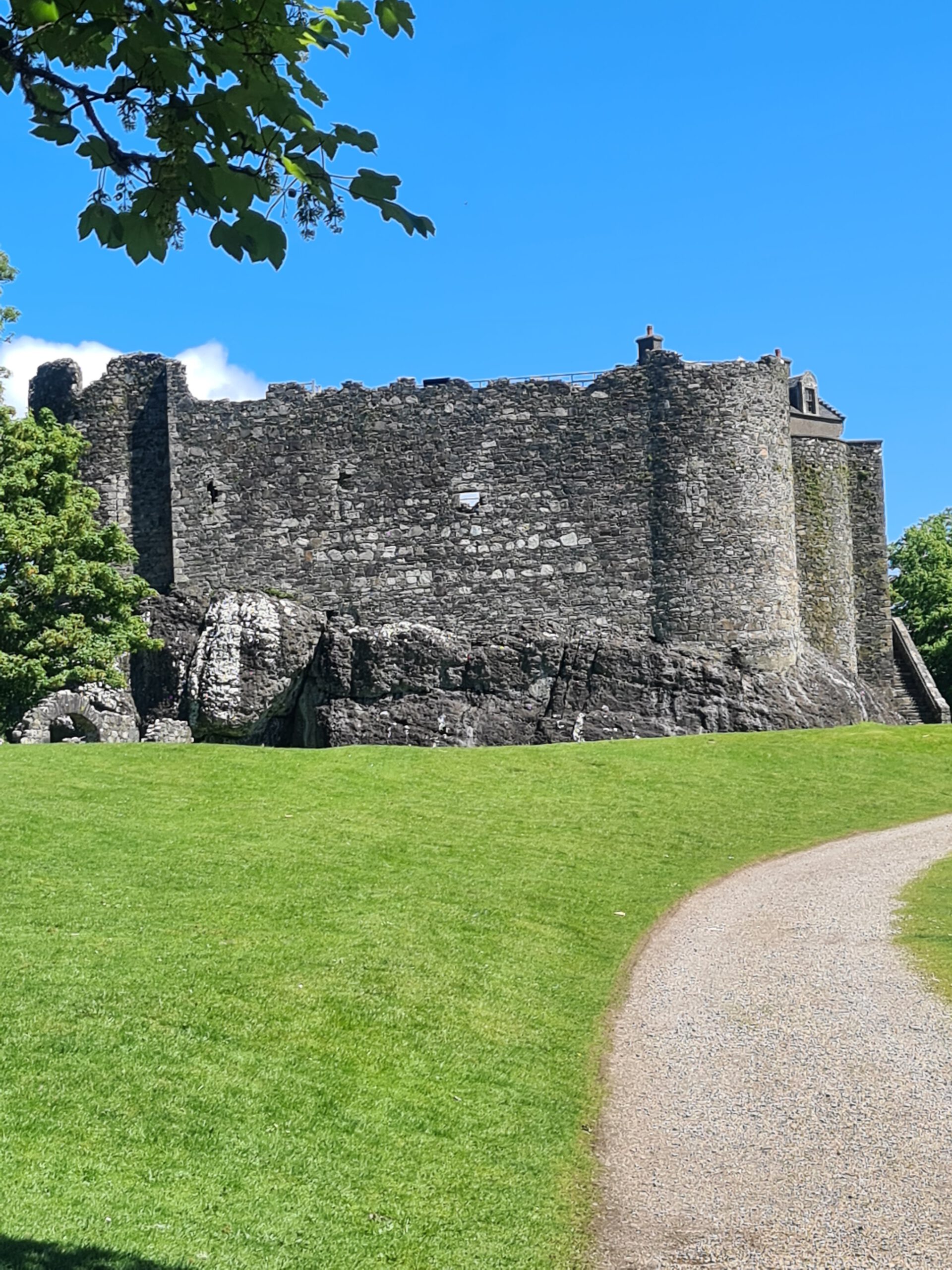Location: Dunbeg, near Oban, Argyll, Scottish Highlands
kind of castle: stone fortress
today: open to public
public transport: buses to Dunbeg, short walk to the Castle itself
scheduled monument: yes (both the Castle and the nearby chapel)
managed by: Historic Environment of Scotland
entrance fee: £ 7 (subject to changes)
opening times: all year 10am to 4 pm (longer during the summer months, check website for up to date information)
directions: Dunstaffnage Castle – Google Maps
Often referred to as the home of the King/Lord of the Isles, Dunstaffnage Castle has had a long history, dating back to the 13th century, making it one of Scotland’s oldest stone castles. This past was not always sunny, quite the opposite actually, with its important location and even more important keepers, the castle was besieged, used as a prison or simply a central position during the wars with Norway over the rule of the Hebrides.
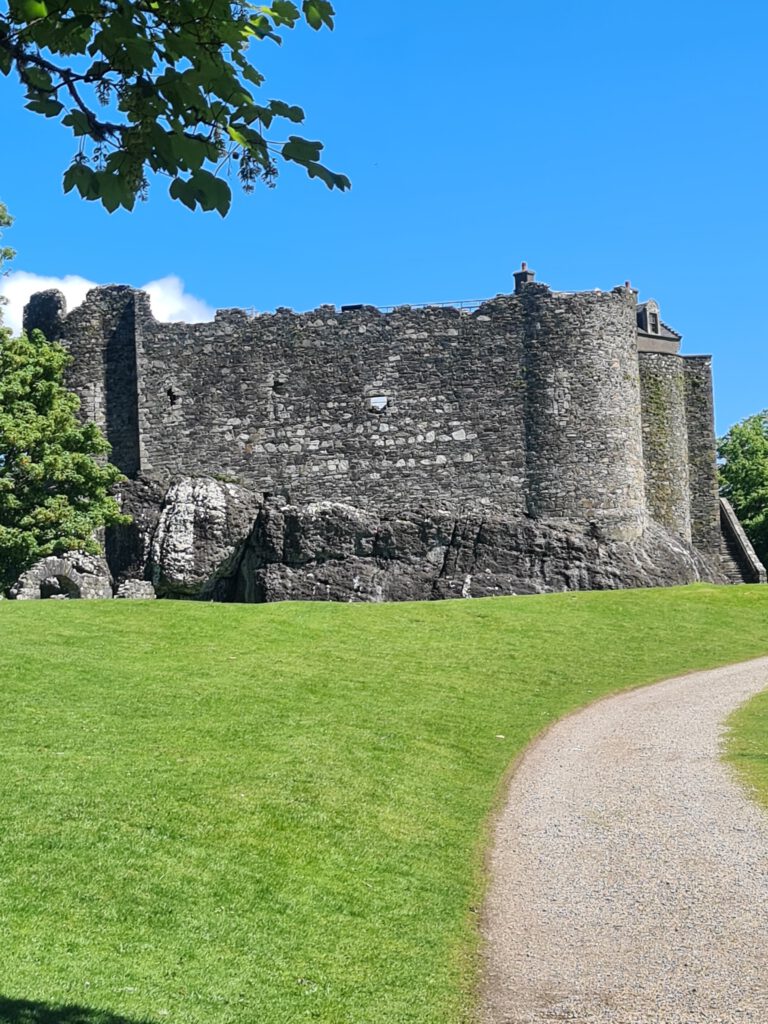
Guarding the approach onto the mainland from the Firth of Lorn to the Pass of Brander to this day the castle attracts many a visitor from all over the world, lying only about 5km from Oban. The castle is located on a rock which formerly was believed to have been pretty much surrounded by water, more looking like an island than it does today, the chapel ruins on the other hand are in the nearby wood, easily reached from the castle.
Formerly the stronghold of clan MacDougall, Dunstaffnage Castle has seen several owners over the years, starting with Clan MacDougall in the 13th century, with Duncan MacDougall building it, before being taken over by the Scottish Crown in 1309, after Robert the Bruces siege being successful, before it finally fell into the hands of Clan Campbell in 1470, who owned it for the longest period, while also handing the castle ruins into the care of Historic Environment of Scotland.
The castle was built around the period of 1220, there is no clear record as to when exactly, however, it definitely was built before 1240. Duncan MacDougall, who ordered the castle to be built in the first place, was the grandson of the Earl of Somerled, which was referred to as ‘King of the Isles’ and son to Dubhgall Lord of Lorn.
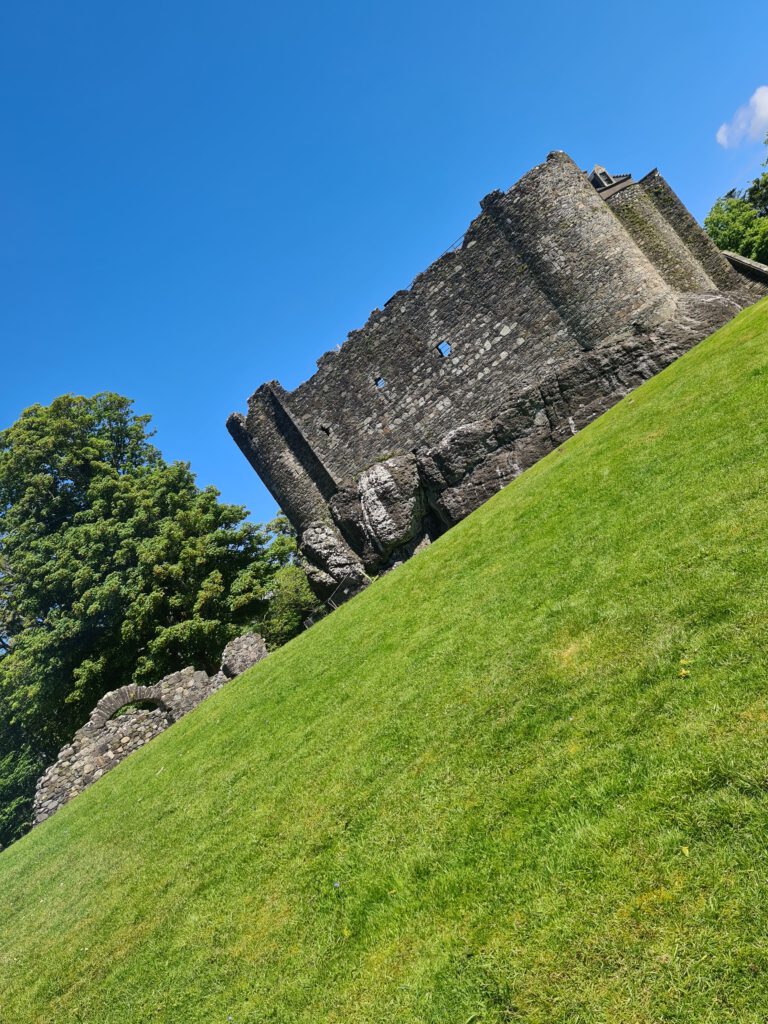
After being built, the castle consisted of a curtain wall of stone, inside which were hidden and well protected, the residential and service buildings. The stone wall had few openings very narrow vertical slits used to shoot arrows. It most likely was his son Ewen who added the round towers of which you can still see remaining parts today. Those round towers were used to show power as well as improving the defences, back in the day, later becoming part of a gatehouse, at least one of them.
There is no point in denying that back in the day the round towers as well as the big curtain wall were more than just needed. Wars with Norway, the Wars of Independence and then the Jacobite Risings and usual Clan feuds, a castle without plenty protection would have quickly been a complete ruin.
The MacDougalls lost control over much of the surrounding area in 1266 already, but it took until 1309 until the fortress fell into the hands of the crown after being besieged by Robert the Bruce in 1308, defeating the MacDougalls at the Pass of Brander.

Being controlled by definitely more keepers than clans, the time Dunstaffnage Castle was under the control of the crown and the appointed keepers, the castle still saw a lot of action. After the Battle of Inverlochy, James I seized the castle, his enemies hiding inside the high walls. Only 24 years later, in 1455, James Douglas stayed at the castle.
John Stewart, one of the later keepers, was stabbed while on his way to get married at nearby Dunstaffnage Chapel in 1463, he somehow managed to make his vows still and at least left his newly wed wife with a title. This murder was arranged by Alan MacDougall, who was a rival of John Stewart of Lorn. Following the murder MacDougall took the castle but was soon driven out by James III. This was also the start of the Campbell reign at Dunstaffnage, with James III granting the fortress on the shore to Colin Campbell, 1st Earl of Argyll, just seven years after the bloody murder of John Stewart, making 1470 the year of the start of the Campbell reign in Argyll. (which is only something I am naming it personally 😉 )
Being appointed the captains of Dunstaffnage the main task of the Earls of Argyll, the Campbells, was to keep the fortress ready for any kind of attack or fighting action. The Campbells were loyal subjects to the crown and as such fortified the castle further, changing one tower to become a gatehouse. In this time countless expeditions were launched by the government against the MacDonalds also referred to as Lords of the Isles (not just the self-appointed ones as the previous owners of Dunstaffnage Castle). This loyalty was rewarded by James IV visiting the castle twice during the 15th and 16th century.

In 1644, as part of the Civil War, the castle was besieged by Montrose’s army but never fell. In the end it was burned by royalist troops, in 1685, after Argyll’s Rising, against James VII, failing.
The Jacobite risings didn’t leave the rebuilt parts of the castle be as well…
During the rising of 1715 it was occupied by government troops and during the last rising of 1745 it played an even bigger role, along with being occupied by government troops again, it was also the place where Flora MacDonald, after helping Prince Charles Edward Stuart escape in the end of 1746, was kept prisoner for a while before being transported to the Tower of London, from which she was released in 1747.
After a fire in 1810, the captains moved to Dunstaffnage House, the tenants however kept on living within the castle up until 1888. Over the years, the castle fell more and more into decay before restoration work was undertaken in 1903 by the Duke of Argyll who owned the castle.
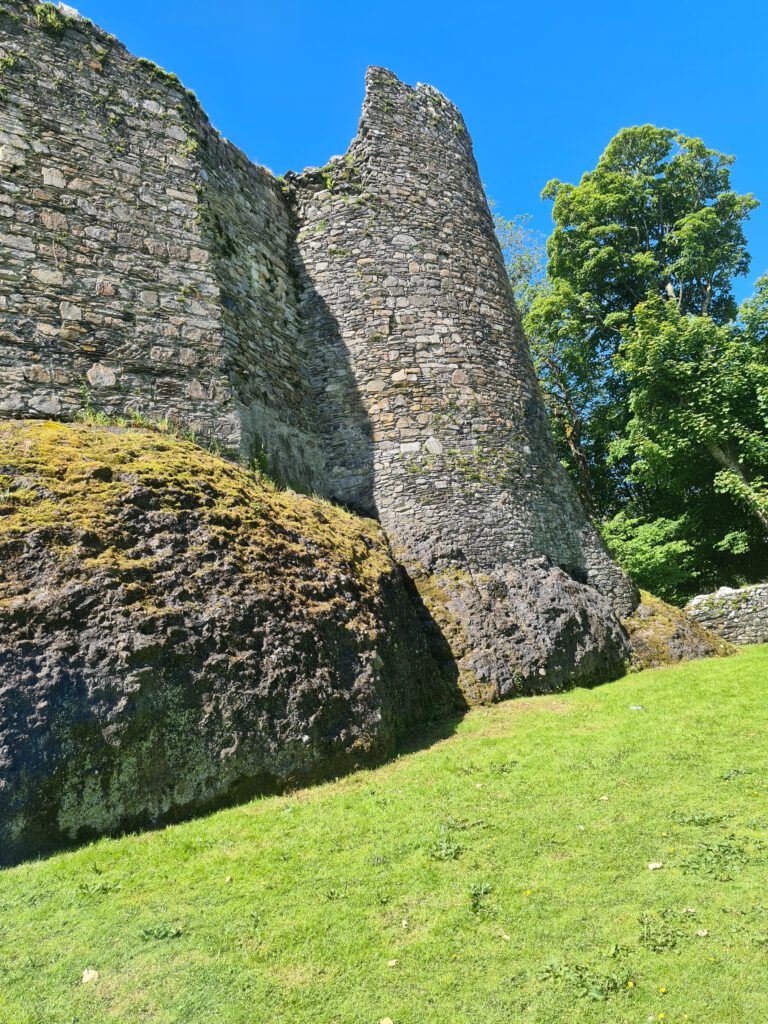
Around 1912 there was some confusion surrounding Dunstaffnage Castle and who actually owned it, the Court of Session ruled that Angus Campbell who was the 20th hereditary captain, had the right of residence, though the Duke of Argyll are the rightful owners.
Further repairs, after 1912 were delayed by the First World War coming along and in the end, the total restoration was never completed. In 1958 something happened on which both, the 21st Captain and the Duke, agreed, this event was the decision to hand over the castle into the state care of the Historic Environment of Scotland, which opened the castle to the public to visit.
Though the castle is now in state care, the title of Hereditary Captain is still existing, the captain being responsible for the castle and its defences, though there is no military significance connected with it anymore. The man calling himself the captain of Dunstaffnage Castle is required to spend three nights each year in the castle. There are no responsibilities and privileges connected with the post anymore.
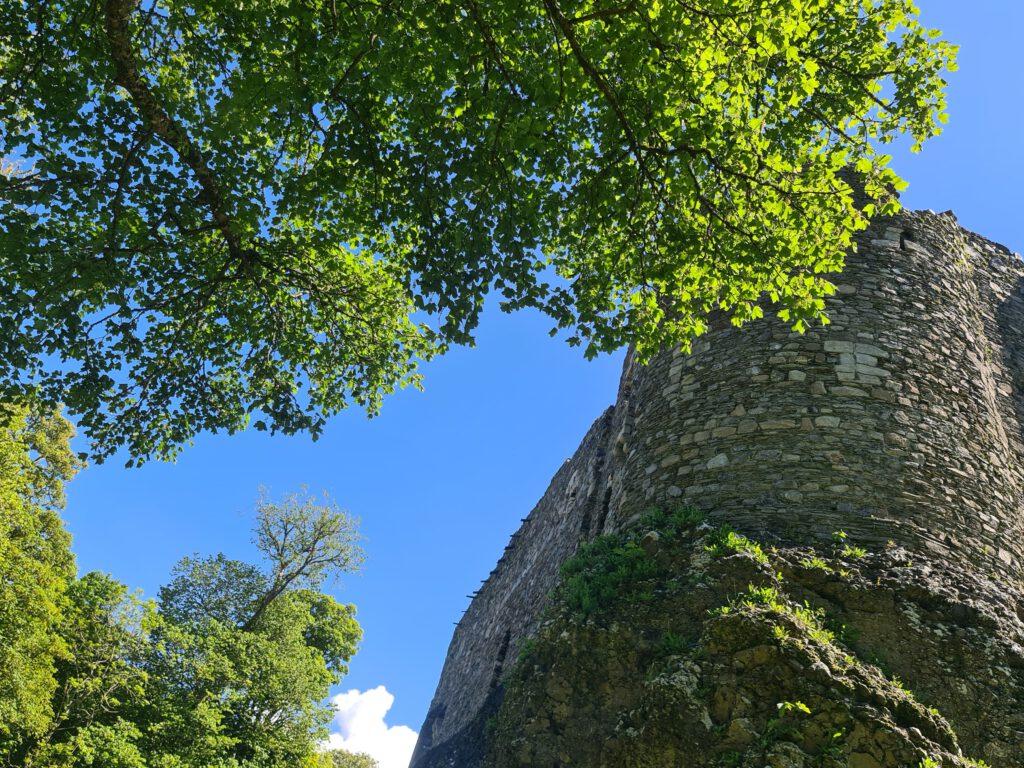
So, we come to an end about the history of Dunstaffnage Castle, all in all in use from the 13th century up to the 19th century and a famous sight ever since. But the best part is yet to come, the ghost stories surrounding the old building.
The most famous ghost at Dunstaffnage is that of the ‘Ell-maid of Dunstaffnage’ which is closely connected with events taking place in the life of the keepers, the Campbells, both good and bad! If she is seen smiling, there are happy events to come, but if you see her sad or even weeping there is trouble to come. The maid is also said to hand on handicraft skills, which might be more or less useful these days…. lesser these days but back in the day this was an amazing gift to receive for sure.
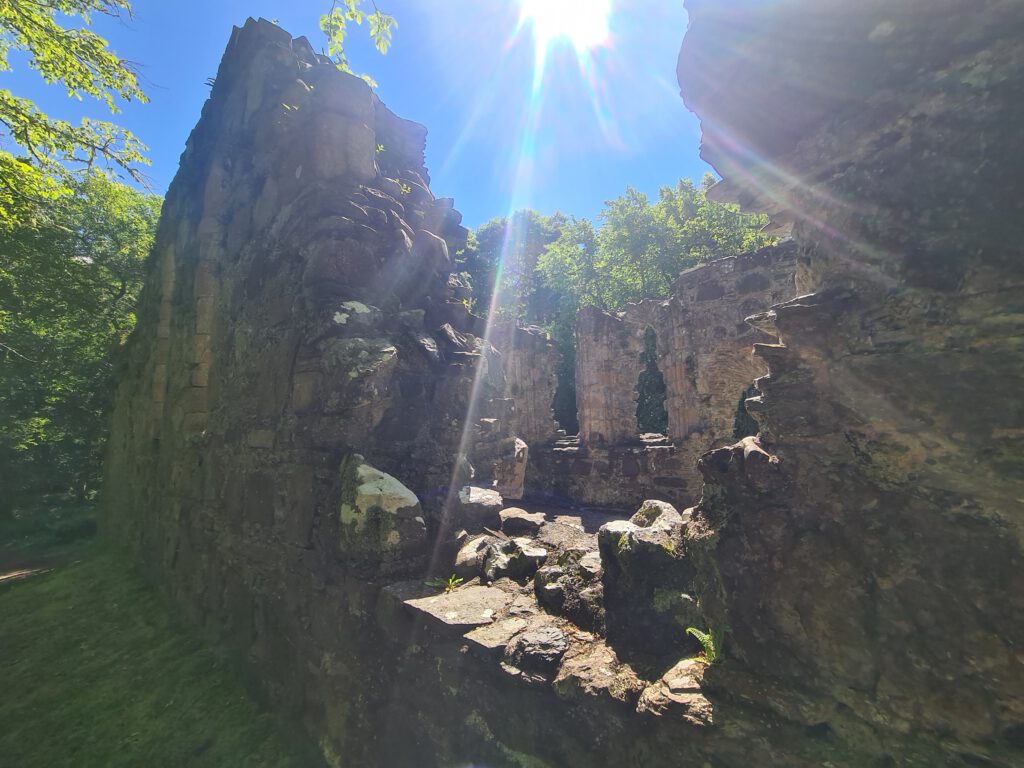
Dunstaffnage Chapel
Located on the grounds surrounding the castle, in a beautiful stretch of woodland which is home to pipistrelle bats, is Dunstaffnage Chapel, a beautiful and calm place built in the 13th century. To this day the chapel offers a great example of the architecture of the time, though in ruin. It was built by Duncan MacDougall of Lorn, along with the castle, the original purpose being that of a private chapel.
The building is thought to have been in quite a ruinous state around 1740 already, which means before the burial aisle was added to serve as a resting place to passed Campbells of Dunstaffnage, it for sure is a beautiful sight to this day and worth the wee detour through the calming woodlands.
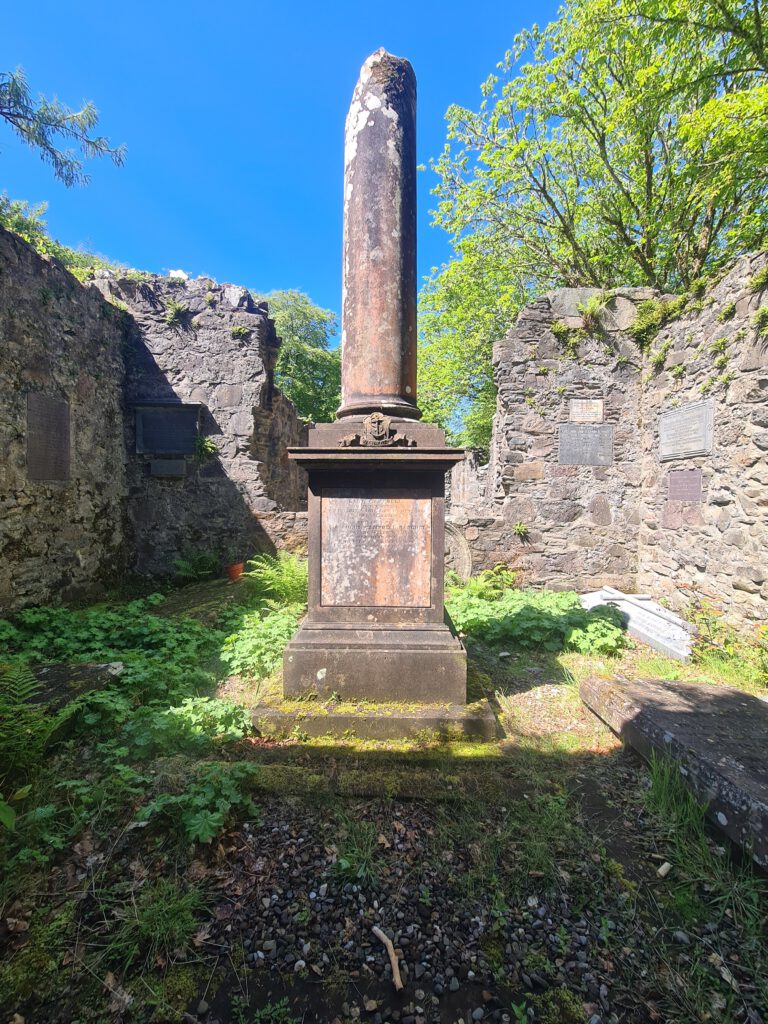
I must mention that I had quite a full day when I visited the castle and unfortunately it was closed that day as well… which left me to explore the grounds and the chapel only before heading on, on my route. I will definitely come back though and as I always suggest in my head, don’t make the same fault as me but go and explore with enough time!
Stay responsible and take care of yourself and the places you are visiting, but don’t forget to enjoy the stunning place that is called Scotland.
